 WHO Sudan Representative, Dr. Naeema Al Gasseer: "Mycetoma is a disease of poverty." (Photo: WHO Sudan)
WHO Sudan Representative, Dr. Naeema Al Gasseer: "Mycetoma is a disease of poverty." (Photo: WHO Sudan)
July 19, 2017 - Mycetoma or ‘Madura foot’, the fungal infection that destroys feet and limbs, is still a neglected disease, both in Sudan and around the world. Although the World Health Organization (WHO) and its partners have taken important steps in fighting the preventable disease, it continues to be a scourge for Sudanese people and patients worldwide.
Health practitioners, medical students, youth organizations and key community leaders gathered this morning at Khartoum’s Rotana hotel to discuss, brainstorm on, and advocate for the latest advances in the fight against mycetoma. The event, organized by the WHO Collaborating Center on Mycetoma Research at Khartoum University (MRC) in collaboration with Sudan’s Federal Ministry of Health, the Ministry of Higher Education, and WHO, highlighted some of the most vexing issues in this battle.
“Mycetoma is a disease of poverty,” said WHO Representative Dr. Naeema Al Gasseer, speaking at the event. “The cost of diagnosis and treatment is relatively high, so those who cannot afford treatment suffer disproportionately, and those who do pay for care are at risk of falling into poverty.” Because the disease affects mostly young men, mycetoma also has a negative impact on youth productivity and employment.
Besides those involved in the public health field, a large number of media, artists, designers and poets gave acte de présence as evidence of Sudan’s wider social corporate responsibility.
Professor Ahmed Fahal, Director of the MRC, called attention to the launch of Clinical Trial Research as the first of it’s kind to address cost-effective treatment of mycetoma. He also recognized the Swiss-based NGO DiNDI as an important ally in the fight against Neglected Tropical Diseases, or NTDs: “We have successfully partnered with relevant local, regional, and international partners to support this research and all our other important work.”
Dr. Al Gasseer emphasized that an effective response to mycetoma must also involve strong advocacy and prevention elements. In Sennar State, for example, one such intervention was highly successful. Dr. Al Gasseer: “The key aspect of this success was everyone working together hand in hand. Families, the health authorities, the governor, the private sector, local authorities and community leaders, as in the leadership of the Wali, Mr. Al Mahi, all participated.”
To fight mycetoma and improve general health, Sudan’s Federal Ministry of Health is currently finalizing a strategy to tackle all NTDs. Their approach includes research and concrete measures to improve access to safe water, a safe environment, proper management of solid waste, appropriate sewage, and a separation between human and livestock living spaces. Sudan’s government has also provided free treatment to 7000 mycetoma patients.
The fungal disease mycetoma, more commonly known as Madura foot after the Indian city where it was documented, enters the body through small cuts in the skin, most commonly of the feet of young men. Accurate data on the number of mycetoma patients is difficult to obtain, in part because it is not a notifiable disease. Nevertheless, MCR has registered over 7200 mycetoma cases in Sudan since 1991 and continues to track and reduce the disease’s impact.









